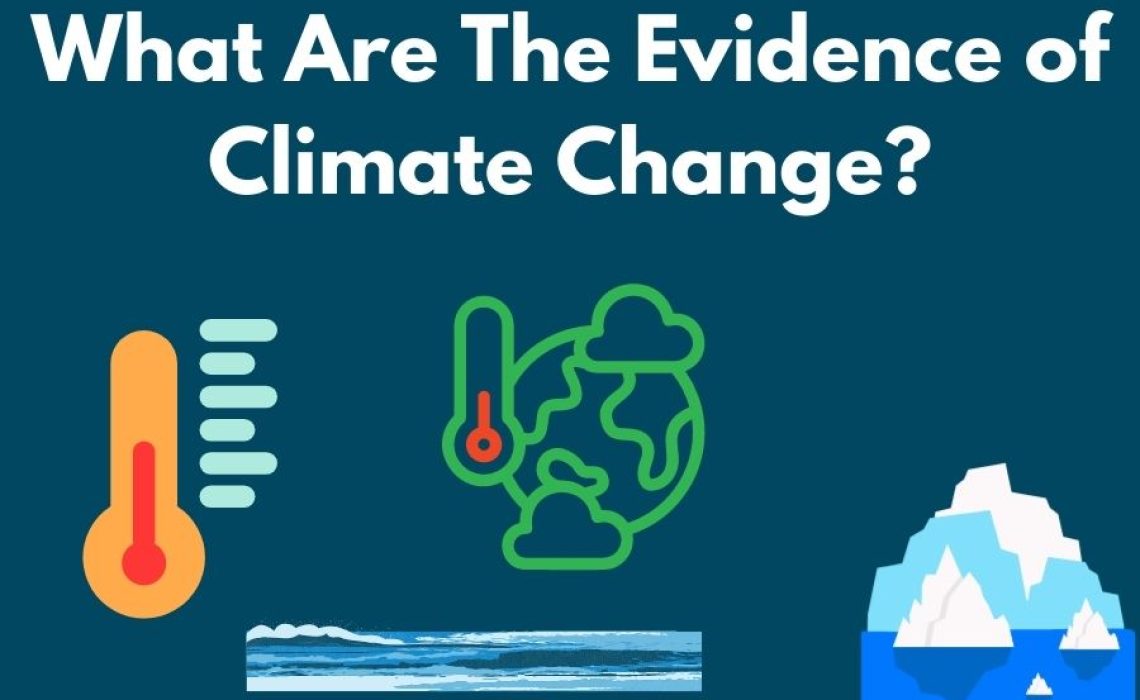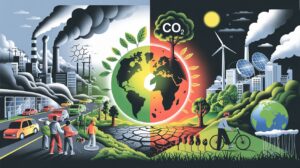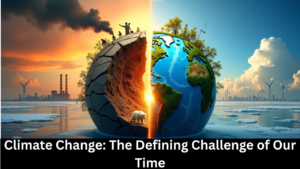Climate change, a term that has sparked intense debate and concern in recent years, presents itself in various ways. While some sceptics continue to question its existence, a wealth of scientific evidence unequivocally demonstrates the reality of this global phenomenon. Let’s delve into the key indicators that highlight the pressing issue of climate change.
Table of Contents
ToggleUnveiling the Evidence: Climate Change’s Indisputable Mark on Our Planet
Here are major evidence of climate change
Rising Temperatures: evidence of climate change
Undeniably, the planet’s warming trend. Over the past century, the Earth’s average temperature has risen by about 1.2 degrees Celsius (2.2 degrees Fahrenheit), with accelerated warming occurring in recent decades. The past seven years have been the warmest on record, emphasizing the intensifying problem.
Shrinking Ice Sheets and Glaciers: evidence of climate change
An icy tale unfolds. The Greenland and Antarctic ice sheets, which hold vast quantities of the Earth’s frozen water, have experienced a significant reduction in mass. Concurrently, glaciers across the world, from the Alps to the Andes, are retreating at unprecedented rates – a visible sign of our planet’s struggle.
Rising Sea Levels:
Oceans engulfing shores. Since the early 20th century, global sea levels have risen by approximately 20 centimetres (8 inches), primarily due to the melting of ice sheets and the expansion of seawater as it warms. This has led to increased coastal flooding and erosion, threatening both human and natural habitats.
Ocean Acidification: evidence of climate change
A bitter reality. As carbon dioxide (CO2) emissions increase, oceans absorb a significant portion, causing a chemical reaction that makes the water more acidic. Ocean acidification poses a substantial threat to marine ecosystems, particularly coral reefs, and the diverse species they support.
Extreme Weather Events:
Calamity unleashed. An uptick in the frequency and intensity of extreme weather events, such as hurricanes, heatwaves, droughts, and heavy rainfall, has been observed in recent years. These events disrupt ecosystems and human societies, causing considerable damage and loss of life.
Shifts in Plant and Animal Behavior:
Nature’s response. Climate change has caused discernible shifts in the behavior and distribution of plant and animal species. Changes in migration patterns, breeding seasons, and habitat ranges are becoming increasingly apparent as species adapt to altered environmental conditions.
The decline in Arctic Sea Ice:
A chilling revelation. Arctic sea ice plays a critical role in regulating Earth’s climate. However, in recent decades, its extent and volume have been shrinking at an alarming rate, particularly during the summer months. This loss of sea ice contributes to a feedback loop, where less ice leads to more warming, and ultimately, even less ice.
Permafrost Thawing:
The frozen ground is under threat. Permafrost, the perennially frozen ground found in the Arctic and subarctic regions, is thawing at an accelerating pace. This not only damages infrastructure and destabilizes landscapes but also releases stored greenhouse gases like methane and carbon dioxide, further exacerbating climate change.
Increased Frequency of Wildfires:
Infernos are on the rise. Climate change has led to hotter and drier conditions, increasing the risk and frequency of wildfires. These devastating events release large amounts of carbon dioxide into the atmosphere, destroy habitats, and impact air quality, posing a significant threat to both human health and the environment.
Changes in Precipitation Patterns:
A shifting balance. Climate change has caused alterations in global precipitation patterns, leading to increased flooding in some areas and droughts in others. These changes can adversely affect agriculture, water resources, and infrastructure, posing challenges to human societies and the natural world alike.
In summary, the signs of climate change are manifesting in myriad ways, spanning from the depths of the oceans to the highest peaks of our planet. Recognizing and understanding these indicators is crucial for informed decision-making and collective action in addressing the profound challenges posed by this global crisis.
Conclusion: Evidence of Climate Change
The evidence for climate change is abundant and compelling, from the air we breathe to the oceans that envelop our planet. As we confront this existential challenge, it is our collective responsibility to take meaningful action – mitigating the impacts and adapting to a changing world. Only then can we ensure a sustainable future for generations to come. (1)







2 thoughts on “What are the evidence of climate change?”
Pingback: What Are The Main Threats of Climate Change?
Pingback: What are 5 examples of climate change? - 2023